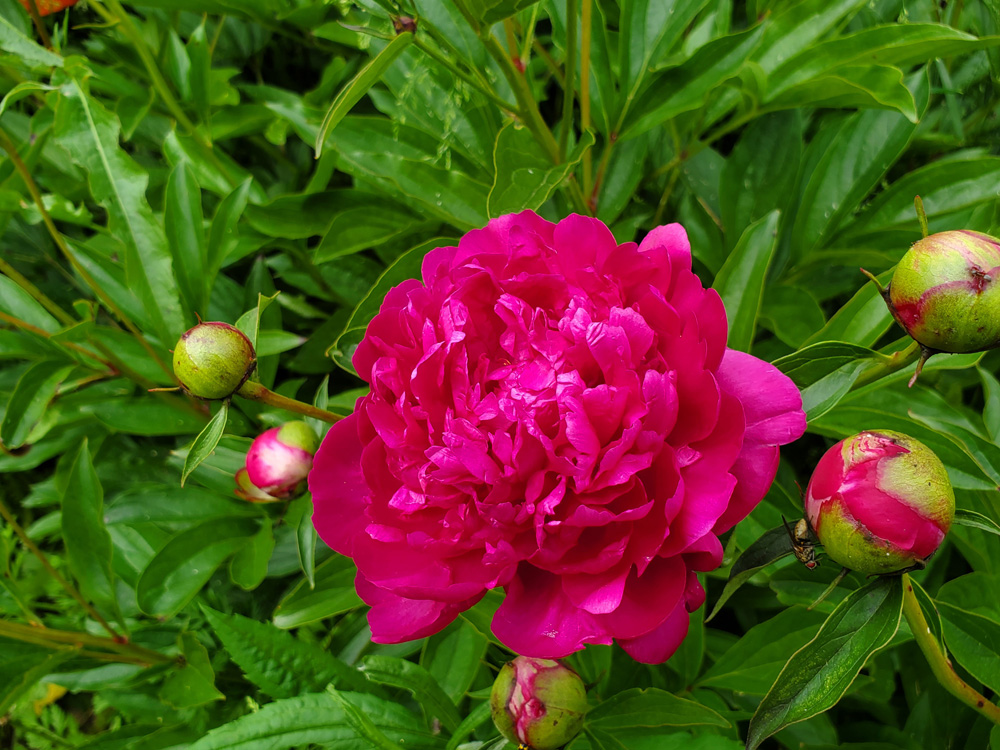Fertilizer and fertilizer terms

In the last column, we focused on nitrogen and why it is important for plants. Nitrogen is one of the major plant nutrients, and fertilizers contain nutrients. They are not “plant foods,” however. Nutrients are directly absorbed by plant roots and, in some cases, by foliage. According to the University of Maryland Extension (UME), plants use nutrients to make carbohydrates, proteins, defense compounds as well as other compounds.
Plants growing in the wild don’t need fertilizers, UME explains, because they get their nutrients from the air, water, soil minerals, and soil organic matter – plants, fallen leaves, microbes, and animals that die and decompose. Our gardens likely DO need fertilizer because soils around homes have often been disturbed and topsoil removed. Organic matter is less abundant because leaves and other yard waste may be cleared away and sent to the landfill. Native and non-native trees and shrubs can thrive in our yards without fertilizer, but vegetables, fruits, and flowers are more likely to need fertilizer and/or additions of organic matter to reach their full potential. Good plant health depends on a continuous supply of available nutrients from the soil.
The University of Maryland Extension explains that fertilizers are regulated materials that contain at least one plant nutrient. The nutrient content is guaranteed by the three numbers found on bags and containers of fertilizer. Also known as the nutrient analysis, these numbers represent the percentage, by weight, of nitrogen, phosphorus, and potassium. A five-pound bag of 10-5-5 fertilizer, for example, contains 0.5 pound of nitrogen; 0.25 pound of phosphorus (expressed as phosphate); and 0.25 pound of potassium (expressed as potash).
Cornell University says there is often confusion over the terms inorganic, synthetic, organic, natural, and special-purpose fertilizers.
There are some inorganic fertilizers that exist in nature as insoluble parent/rock materials such as rock phosphate, sodium nitrate, and potassium sulfate, Cornell says. Others are manufactured products made from non-living materials. These are referred to as synthetic or chemical fertilizers. Examples include ammonium sulfate – used on acid-loving plants like blueberries and azalea; superphosphate; granular fertilizers like 10-10-10; and liquid fertilizers like Miracle-Gro.
Remember that inorganic fertilizers are mineral salts with nutrients in a soluble form which helps with uptake but can leach easily into the soil.
Organic fertilizers are derived solely from remains, the by-products of once-living organisms. Wastes and by-products of the plant and animal processing industries can be used as fertilizers. Cottonseed meal, blood meal, bone meal, horn meal, and all manures are examples of natural organic fertilizers. There are some human-made or synthetic organic fertilizers, which include urea, ureaform, and IBDU. Organic fertilizers are beneficial for improving the soil’s physical structure and increasing bacterial fungal activity, Cornell says.
Finally, special-purpose fertilizers – packaged for certain uses or types of plants, such as Rhododendron and Azalea Food, Holly Tone, or Rose Food – contain compounds that leave an acid residue that helps acidify the soil. However, these “acidic” fertilizers are not expected to permanently change your soil from alkaline to acid, and, Cornell adds, there are limitations on how much fertilizer can alter soil pH.
Cornell warns that fertilizers packaged for specific plants – like roses – don’t often have a valid research basis for being called “special.” It is best to perform a soil test before purchasing any expensive special-purpose fertilizer. The reserve of nutrients already in the soil changes with every soil type and location.




